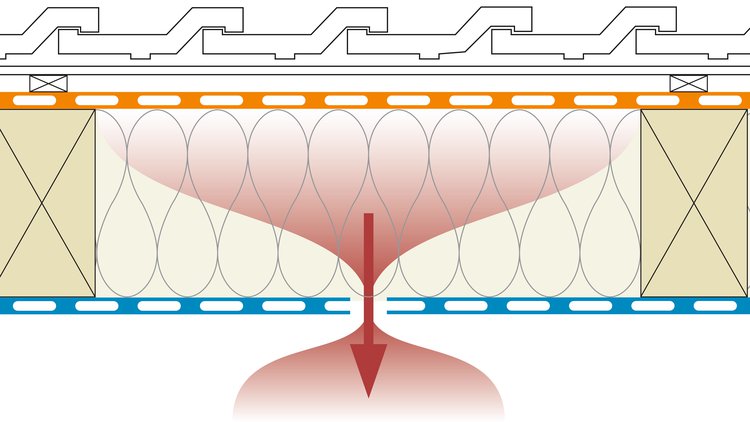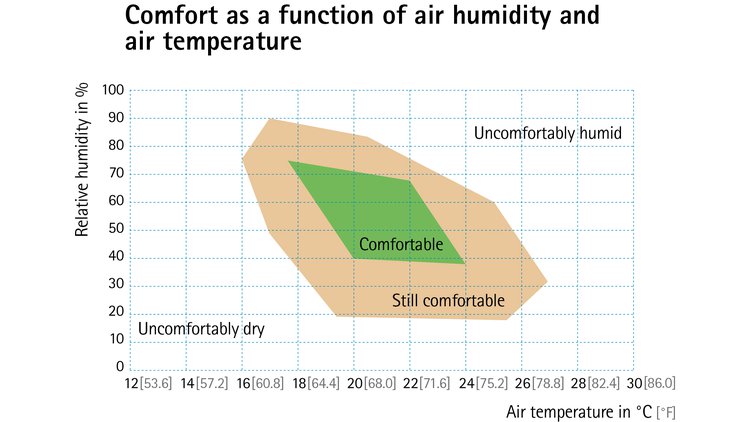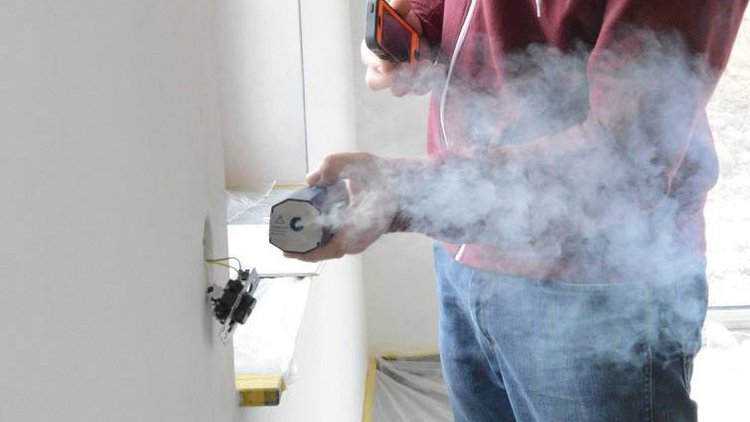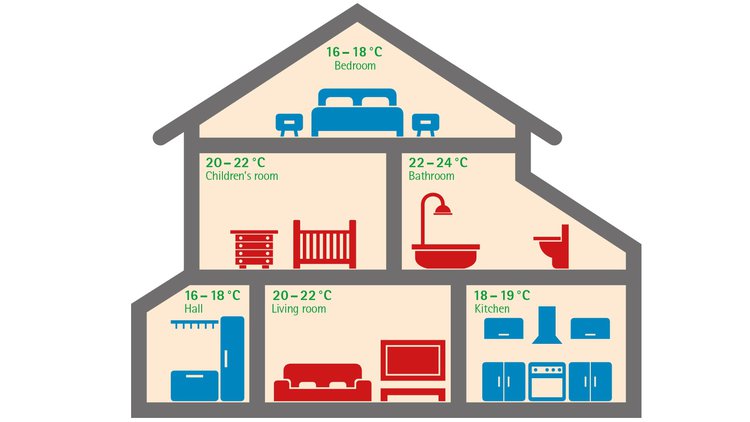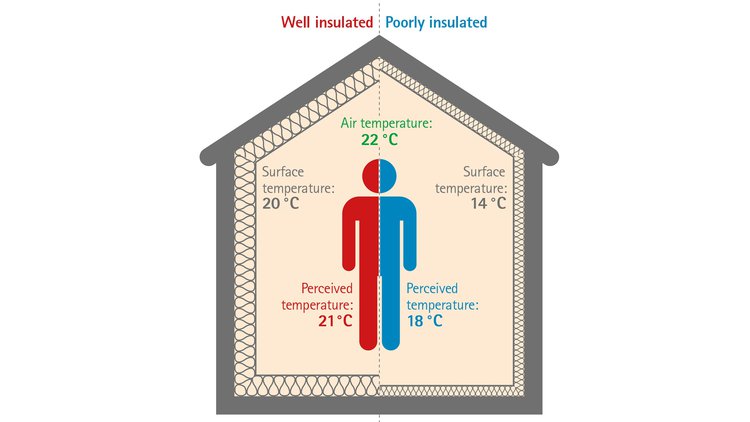Feelgood indoor climates



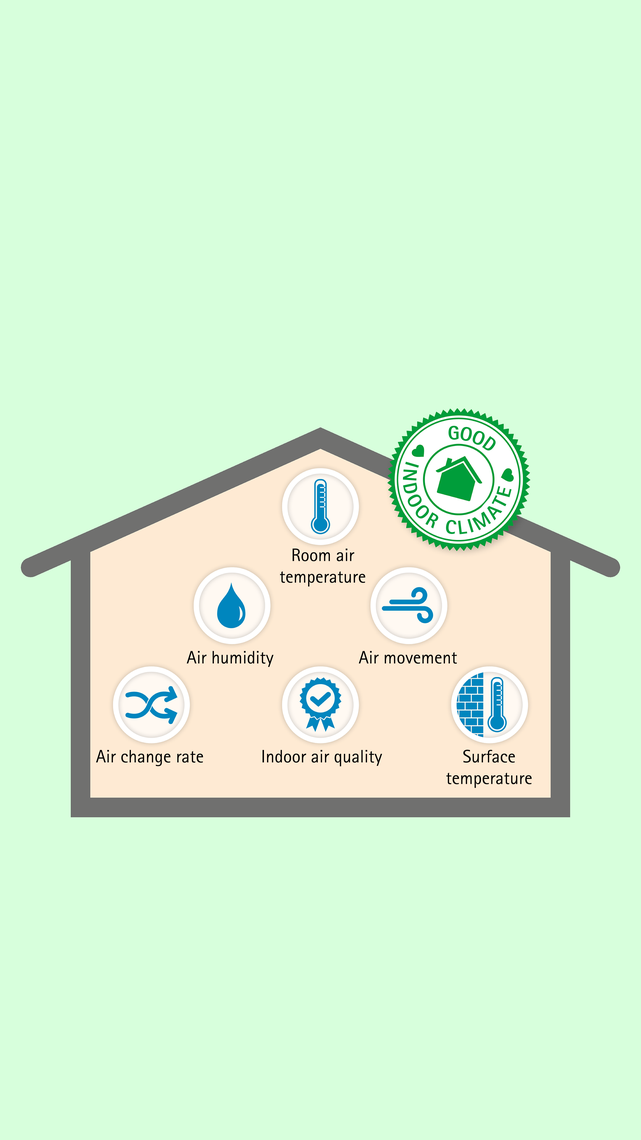
Feelgood
indoor
climates
Airtightness is crucial to achieving a feelgood indoor climate
A thermally insulated, airtight building envelope plays a key role in determining how comfortable and pleasant an indoor environment is for occupants and how active and productive they will be this environment. Of course, comfort cannot be measured objectively as humans perceive their environments very differently. Nonetheless, it is still possible to create an indoor environment where most people will feel comfortable.
The most important considerations for delivering thermal comfort are:
- Air movements in the room
- Room air temperature
- Temperatures of building element surfaces
- Relative humidity
The indoor air quality is the key factor that determines our comfort level. However, acoustics, noise protection, the light situation and colour design also affect our perceived comfort.
Unpleasant indoor environments in summer
The effectiveness of thermal protection against excessive indoor temperatures in summertime is characterised by the time in hours that it takes for the heat present underneath the roof covering to reach the inside of the structure (phase shift), and by the associated increase in the interior temperature in degrees Celsius (°C) in comparison with the variation in the exterior temperature (amplitude damping).
Cool interiors during hot summer weather
To quantify thermal protection in summer, the phase shift and amplitude damping should be calculated. An airtight thermal insulation structure is assumed here. Heat is conducted to the interior in a relatively sluggish manner (depending on the type and characteristics of the insulation material).
Quick heating up due to air flow
Gaps in the airtightness layer result in air flow from the outside to the inside and thus in a high exchange of air as a consequence of the large differentials in temperature and pressure between the indoor and outdoor environments. In this case, the thermal insulation can no longer contribute effectively to summer heat insulation and an unpleasant, excessively warm room climate is the result.
Relative humidity
In Central and Northern Europe, people feel most comfortable at indoor temperatures of between 20 °C and 23 °C at indoor relative humidities of between 40% and 60% in wintertime. Of course, we don’t have one single sense organ that can directly perceive relative humidity, but secondary sensations such as perspiration or a feeling of ‘closeness’ in the air give us a quick, reliable signal that something is not right. For example, dry mucous membranes in wintertime tell us that the indoor humidity is too low and that we should do something about this. Faulty airtightness is often the cause of excessively dry indoor air in winter, and this can even result in illness.
The relative humidity of air expresses the moisture content of air as a percentage of its maximum possible moisture content.
Dry indoor air in winter
The frequently observed phenomenon of dry indoor air in winter is a result of the entry of cold outdoor air into buildings though gaps in the building shell. If this cold air is warmed up by heating, its relative humidity content drops. For this reason, buildings with poor airtightness tend to have air that is too dry in winter, and this cannot be rectified to any significant extent by humidification equipment. The consequence is an unpleasant indoor climate. Low relative humidity has a negative impact on our health and comfort levels
Example: Cold air at -5 °C can hold a maximum of 2 g/m³ of humidity (standard outdoor winter climate as per DIN 4108-3) at a relative humidity of 80%. If this air is heated up to 20 °C (standard indoor winter climate), the relative humidity falls to 11.6%.
Draughts (air movements in rooms)
A properly implemented airtightness layer helps to prevent unpleasant draughts. Continuous air speeds above 0.3 m/s are perceived as unpleasant by humans. Indeed, we find draughts even more irritating if the draught air is cold and if it consistently comes from the same direction. The causes of draughts include leaky windows, air currents from electrical sockets, poorly executed joints between building elements, and air-conditioning systems with incorrect settings.
Temperature of the indoor air
The indoor air temperature is the main determinant of our perceived comfort level. A temperature range of between 20 °C and 23 °C in homes is regarded as comfortable in winter, while temperatures of up to 26 °C are still regarded as pleasant in summer. Airtightness has a crucial influence on the effectiveness of thermal protection in both winter and summer.
Temperature of the wall surfaces
The influence of the temperatures of the perimeter surfaces in a room on perceived comfort is often underestimated. After all, we are in permanent radiative exchange with these surfaces. To achieve thermal comfort, the surfaces of windows, walls, ceilings and floors should have a temperature of between 18 and 19 °C. The temperature differences between various components should also be as low as possible. This helps to avoid unpleasant draughts.


Indoor air quality
Good indoor air is essential if we are to feel comfortable in indoor environments. Ideally, the air should have a neutral odour, and contain a lot of oxygen and low levels of harmful substances, such as VOCs, which can be given off by construction products, cleaning agents or furniture. For this reason, only construction products that have been independently tested and approved should be used if good air quality is to be achieved. Sufficient ventilation is also important. Humans find air with CO2 concentrations of around 0.1 to 0.15 vol.% unpleasant. Concentrations of around 2% can be tolerated for short periods, while breathing difficulties start to occur at concentrations of 3% to 4%.

